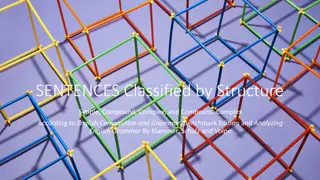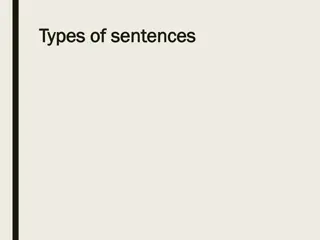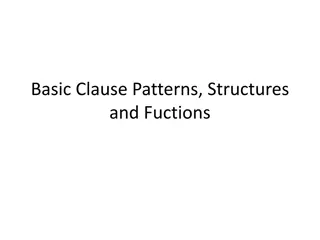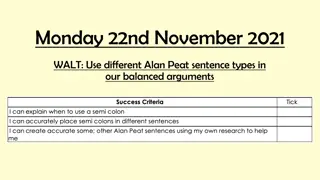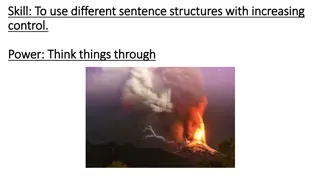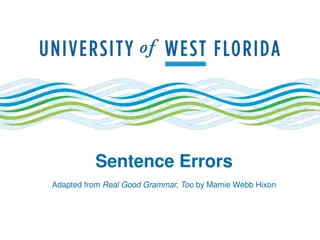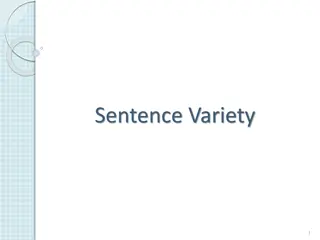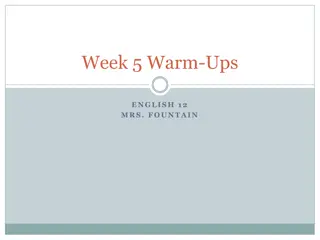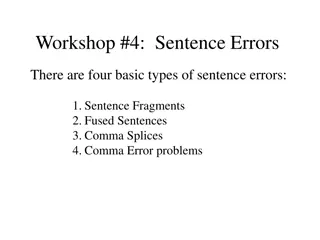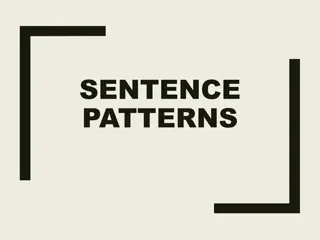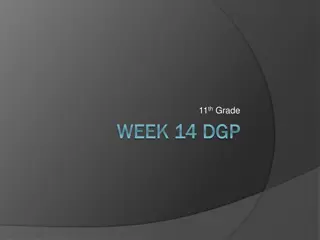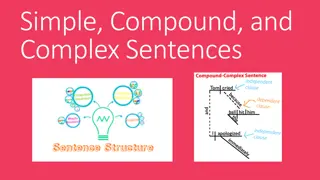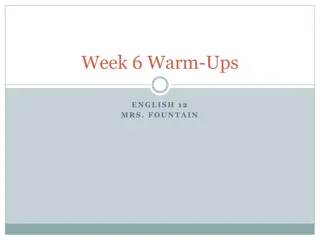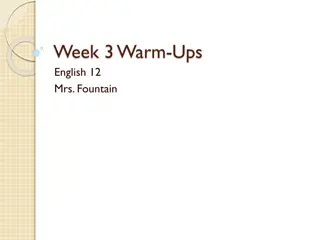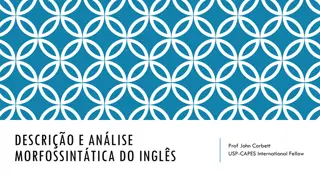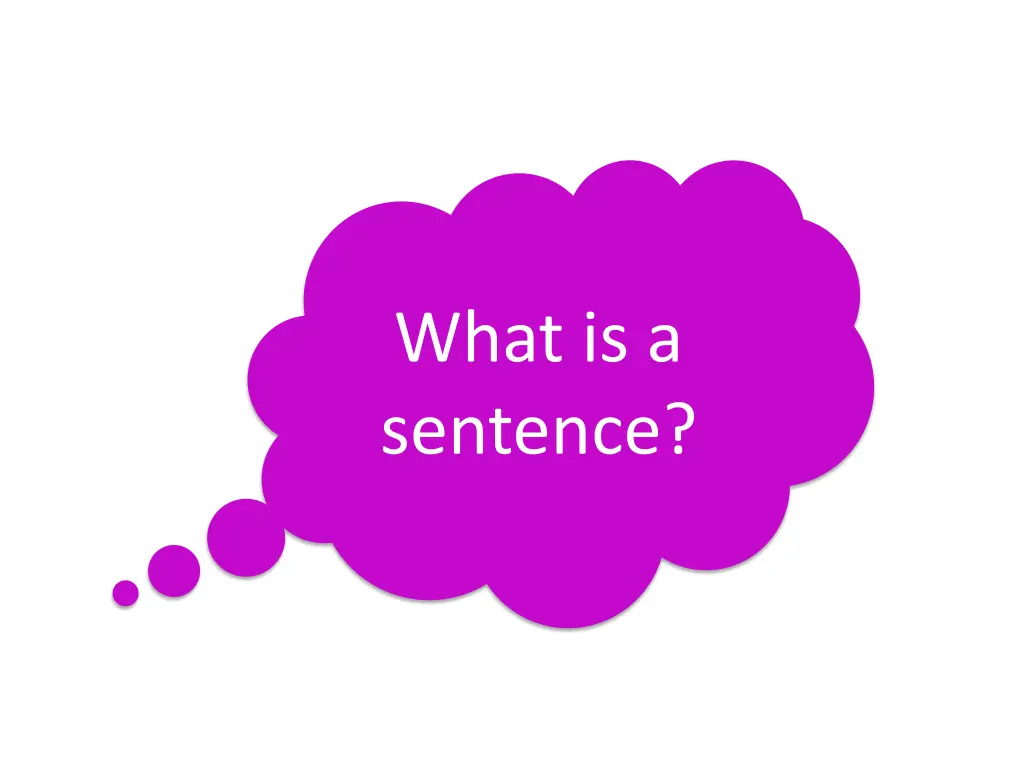
Understanding Sentence Structure and Types for Effective Communication
Explore the fundamentals of sentences, subjects, verbs, and sentence structures. Learn what makes a sentence complete, the different types of sentences, and how minor sentences play a role in English language communication.
Download Presentation

Please find below an Image/Link to download the presentation.
The content on the website is provided AS IS for your information and personal use only. It may not be sold, licensed, or shared on other websites without obtaining consent from the author. If you encounter any issues during the download, it is possible that the publisher has removed the file from their server.
You are allowed to download the files provided on this website for personal or commercial use, subject to the condition that they are used lawfully. All files are the property of their respective owners.
The content on the website is provided AS IS for your information and personal use only. It may not be sold, licensed, or shared on other websites without obtaining consent from the author.
E N D
Presentation Transcript
What is a sentence?
Subject and verbs 1. Julie screamed when Prince appeared on stage. 2. Julie screamed. 3. Julie. 4. Screamed. Which of these are sentences? Why?
What makes a sentence a sentence? John grabbed the iron railing. Which was cold. Mary ran over the cat. Was late for work. The unicorn cried for help. Because the wound was very painful. Why are the words in blue not proper sentences (or independent clauses)? What is missing?
So far we know a sentence 1. needs at least a subject and a verb. 2. can often have an object too. 3. expresses a complete unit of thought. 4. makes sense on its own. 5. starts with a capital letter and ends with a full stop, exclamation or question mark.
There are 5 different types of sentence structure There are 5 different types of sentence structure 1. Minor is an incomplete sentence which still conveys meaning 2. 2. A simple sentence is an independent clause with a subject and a verb, and it expresses one idea. 3. A compound sentence must contain two independent clauses joined with a connective. 4. A complex sentence must contain an independent clause and an dependent clause. 5. A compound-complex must contain at least two independent clause and one dependent clause
There are several types of There are several types of minor sentences clauses in English. clauses in English. These include: These include: 1. Exclamation and interjections - "Wow" and "What the hell 2. Aphoristic expressions (expressing a general truth) (Like father, like son) 3. Answers to questions - ("Not right now"), self- identification - ("Mary here ) 4. Imperatives - ("Go! ) minor sentences and and Basically, if it only has a couple of words and no verbs it is a minor sentence.
A Simple Sentence Must contain one subject and one verb Contains at least one main idea Sounds complete These are sentences built from just one major clause. The subject can be one word or a phrase. Spiders spin webs I like shopping The shaggy-haired Siberian wolfhound sat outside.
A Compound Sentence A compound sentence joins more than one major clause with a conjunction (FANBOYS) For example: It was raining and Sher had forgotten his coat. Sophie had seen a parrot before but she had never seen one this big. Zeb could go to school or he could stay under his duvet all morning.
A Complex Sentence A complex sentence includes a major clause and at least one subordinate clause. In the following examples, the subordinate clauses are in bold. Notice how the major clause works without the subordinate clause: The girl, who had long blonde hair, stood at the window. While he does his homework, Jack listens to the radio.
Compound-Complex Made from two or more independent clauses and one or more dependent clauses Although I like to go camping, I haven t had the time to go lately, and I haven t found anyone to go with We decided that the movie was too violent, but our children, who like to watch scary movies, thought that we were wrong.


